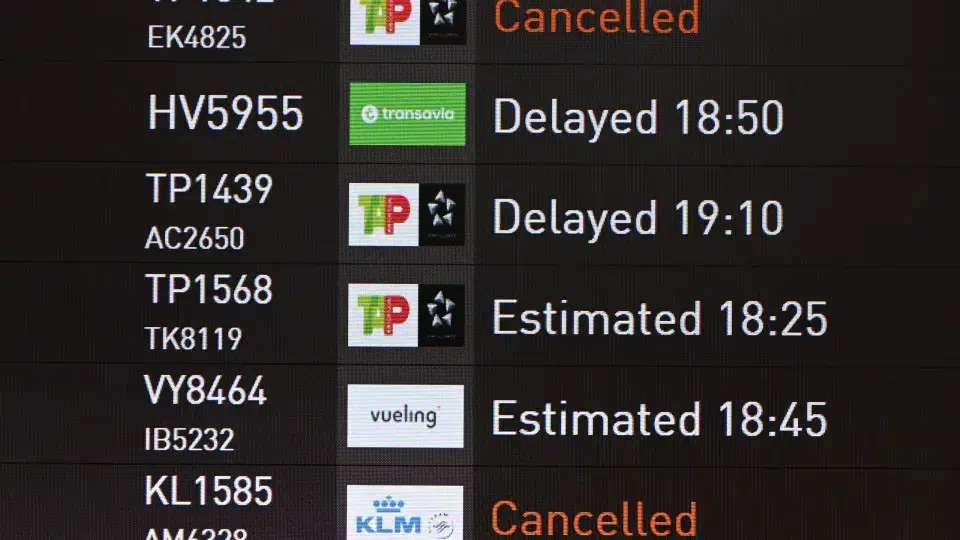
A recommendation is outlined in a letter sent to ANA, analyzing the Report on Consultations about the new Lisbon airport, which gathered contributions from over 100 entities, including airlines, ground handling companies, municipal councils, the National Civil Aviation Authority (ANAC), and NAV Portugal.
“We cannot overlook that the report highlights a misalignment between stakeholders’ expectations and the traffic projections presented by the airport concessionaire, particularly between 2035 and 2045,” read the letter sent to ANA Aeroportos by Finance and Infrastructure Ministers, Joaquim Miranda Sarmento and Miguel Pinto Luz.
The ministers stress the importance of basing the new Luís de Camões airport project at Campo de Tiro in Alcochete, and the master plan for its opening phase, on realistic traffic forecasts. This is crucial to ensure the infrastructure is adequately scaled to meet demand and accommodate any positive deviations.
“Therefore, the State believes that the traffic forecast and its assumptions should be revisited as soon as possible,” they emphasize.
The executive summary of the report, published today on the Mobility and Transport Institute’s (IMT) website, indicates that generally, stakeholders do not reject the growth premise presented. However, no one has submitted an alternative forecast supported by a study.
In the initial report, released earlier this year, the airport operator estimated an evolution to about 52 million passengers by 2060 at the new airport, compared to the current 35 million passengers at Lisbon’s Humberto Delgado.
After reviewing the report, the Government found most contributions received to be pertinent, expressing reservations only about some proposals to alter the “minimum specifications.”
Of the nine proposals submitted by ANA, seven garnered broad consensus among stakeholders, including runway length, spacing between them, and the number of contact parking positions.
Two proposals are subject to further technical evaluation. One relates to reducing the fuel autonomy at the airport facilities from five to three days. The other involves waiving the construction of two catering buildings, with one being a direct responsibility of airport management.
The executive summary also highlights stakeholders’ concerns regarding planning uncertainties and the timeline for accessibility works for the new airport, including the Third Tagus Crossing, rail connections (conventional and high-speed), and the need for redundancy in road access to the passenger terminal.
Among other recommendations, participants suggested that ANA explore alternatives to the increase in fees at Humberto Delgado Airport from 2026, such as reinvestment of profits, capital injections by shareholders, traditional debt financing, or European Union grants. Some entities also proposed using part of the proceeds from selling the current airport’s land, thus avoiding fare increases for users.
The concessionaire proposes funding the project without public subsidies, combining up to €7.3 billion in debt with operational revenues, including a gradual increase in fees. ANA argues that this strategy minimizes financial risks, advances studies, and accelerates the new airport’s timeline.
The specifications for the new airport are outlined in Annex 16 of the concession contract signed in 2012, initially set for a 50-year duration and potentially extendable by another 30 years according to the proposal for the new airport. The Government will take all necessary legal measures to update this annex.
The letter sent to ANA clarifies that these changes do not constitute, legally or under the contract, grounds for the concessionaire to claim the restoration of economic-financial equilibrium.
The schedule anticipates the opening of the new airport at Campo de Tiro in Alcochete by mid-2037, potentially advancing to the end of 2036 with negotiated optimizations with the Government.
The consultation report was delivered in July and represents the first of four interim reports constituting the complete application for the new airport, with the final submission deadline set for January 2028.
The next milestone in the process will be the delivery of the Environmental Report, due in January 2026. The Government highlights, however, that ANA may proceed with subsequent reports—environmental and technical—using the optimized versions already validated by the State.




